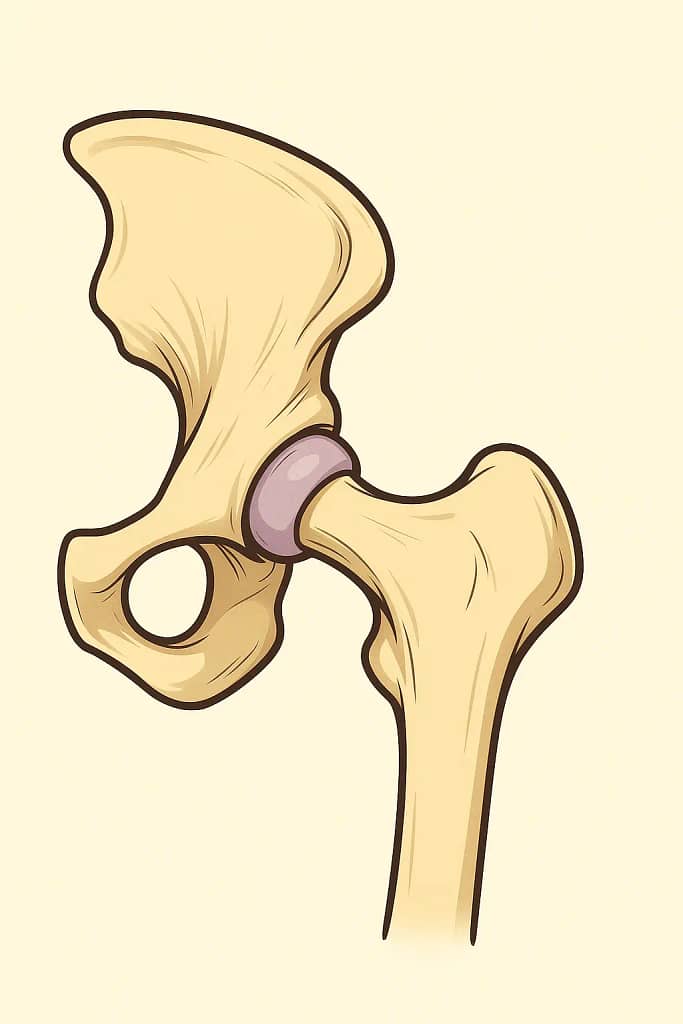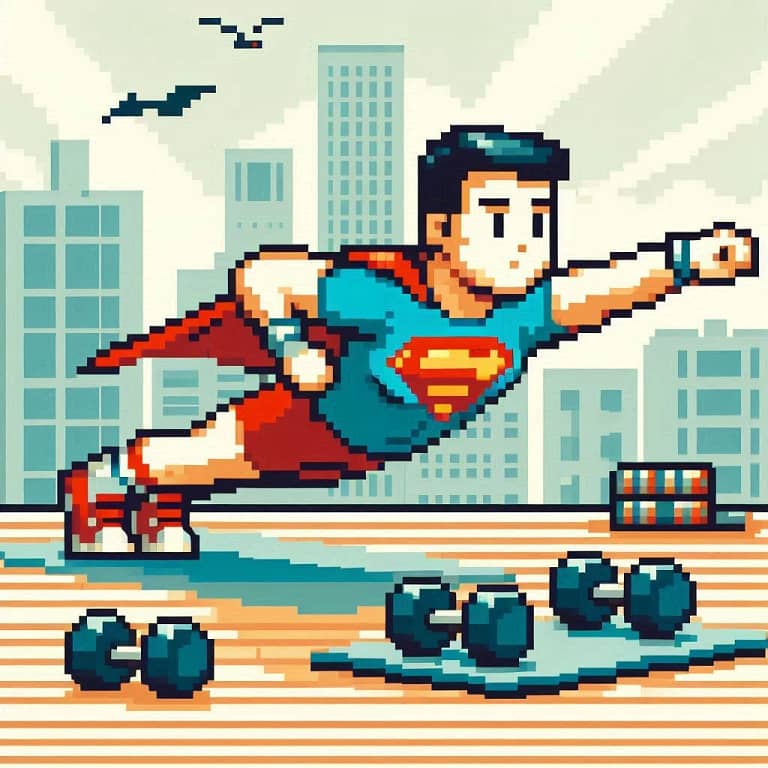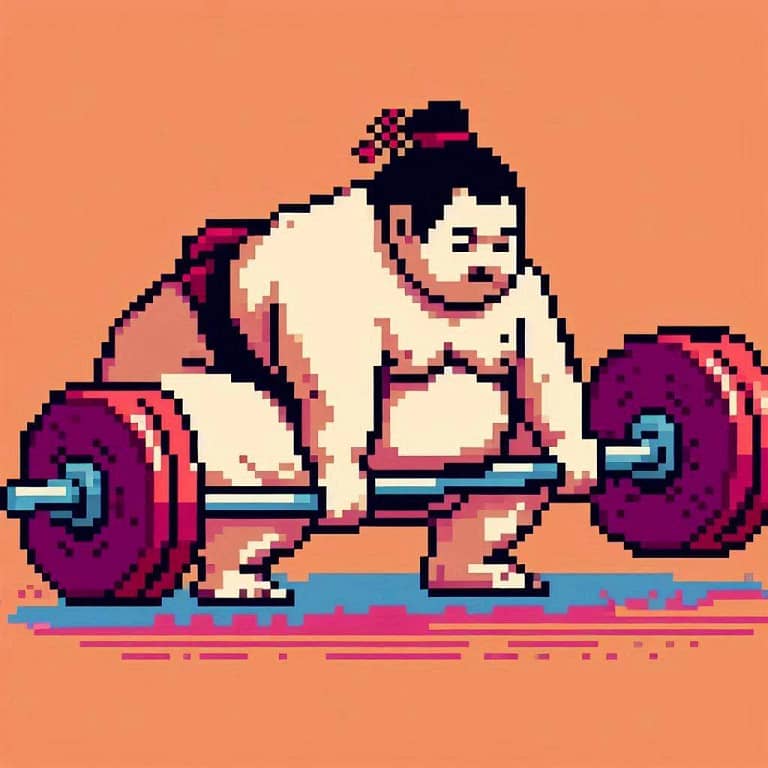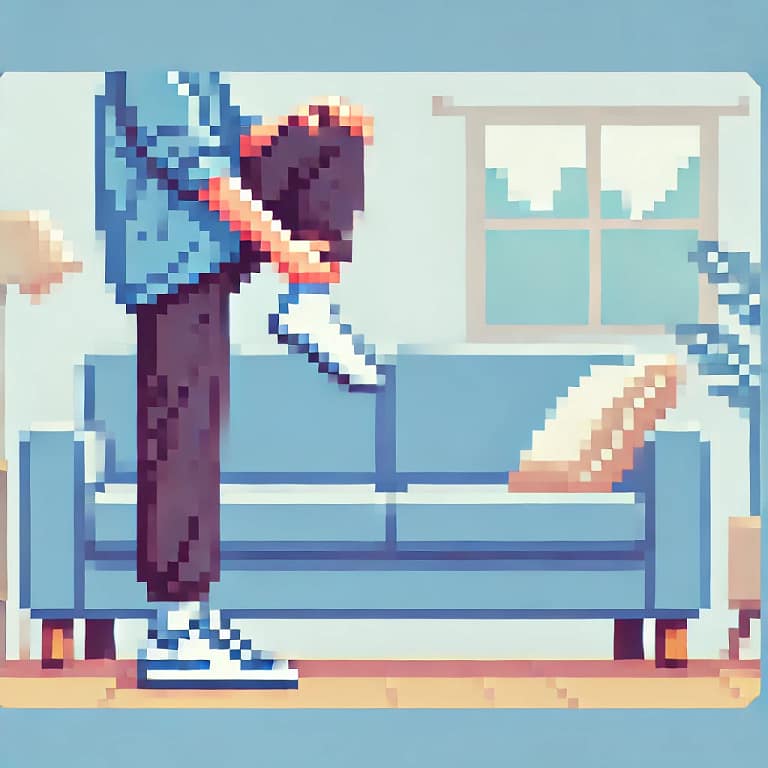Squats: Are they NOT for Everyone?
How to adjust your squat to make it more natural for your hip anatomy
The deep squat is arguably one of the most fundamental and primal movement patterns. It engages multiple muscle groups at once, making it an efficient full body exercise with a lot of carryover to everyday performance and requires adequate hip range of motion, ankle dorsiflexion and trunk stability.
The squat is so important that it is often used by personal trainers as a means to assess the movement capabilities of new clients.
And while the squat may be natural for some, others struggle to reach adequate depth. Is this because of poor posture or sedentary lifestyle? Maybe.
I am a very active person. The squat has NEVER been a natural movement for me. I could always force myself to squat low, but not without pain that increased in severity over time.
I couldn’t explain it. The bottom of the squat felt like drowning at the bottom of a pool. When I squat below parallel I can hear a voice saying, “Get me the hell out of here!” My hips were suffocating.
I forced myself to squat low, thinking that over time my body would become accustomed to the depth. What did I accomplish? I gave myself sacroiliac joint dysfunction as well as hip and back pain.
Was I using too much weight? Maybe.
But then I found an answer and it had everything to do with the structure of my hips. Once I made this small adjustment, everything changed.
Fast forward to today. The squat feels AMAZING! I no longer feel like I’m doing bodily harm when I squat deep. Rather, I feel like I’m “coiling” up, ready to “spring” out of the bottom. My hips feel so much better, my legs feel much more powerful, and the carryover to everyday life has been life changing.
Now I squat down at every chance I get. I walk in the deep squat position, I jump up onto the kitchen counter, not only because it annoys my wife but because that’s how much better deep hip flexion feels. My lower back and hip pain is virtually gone!
I want to share how I got here in the hopes that someone might read this entry and find something useful to help them improve their squat.
Let’s briefly address why the squat is important, why some people struggle with it, and what you can do to make the squat work more “naturally” for the structure of your hips.
Benefits of the Squat
It is a foregone conclusion that the squat is an important exercise. The benefits are numerous.
- Muscle Gain – As mentioned before, the squat has many benefits because of the amount of muscle required to perform it. When loaded properly, the squat can build massive amounts of muscle. There are even programs written solely around squatting as the main lift.
- Improved Strength – When loaded properly the squat can build functional strength that carries over to everyday life and athletic performance.
- Enhanced Mobility – The squat requires mobility of the hips and ankles, as well as stability of the lower back.
Squats are Different for Everyone
Variations in hip anatomy can greatly impact how well a person can squat low without pain.
- Hip Socket and Angle
- Femoral Retroversion and Anteversion
- Retroversion
- Anteversion
- Labral Tears and Hip Impingement
Some people like a wider stance, some like to turn their feet out, some need more of a forward bend at the torso than others.
While improper form and movement limitations can also be a factor, It is important to look at hip structure for improvement of the squat.
It was a simple test. Could they squat without their feet turning out? The feet turning out was a big red flag, especially if you were NASM certified like I was.
Turns out, this rotation of the foot outward may have been part of the person’s natural squat mechanics.
There should be a small amount of tibial (shin) rotation during the squat. Your ankles turning out may not be a sign of poor ankle dorsiflexion, but rather your shins trying to rotate.
I have always wanted to be a good squatter. But try as I might, they just never felt natural for me.
Have you ever felt like the squat just isn’t for you? I certainly have, and not for lack of trying.
As a trainer, I have used the squat as a means to assess new trainees for years.
Because the squat is a multi-joint, full body movement, it has been deemed effective in predicting muscular imbalances.
For instance, when I was a NASM certified trainer, I was taught to assess clients for muscular imbalances such as weak glutes from knees caving in and tight calves from feet turning outward.
If their knees caved in it was a sign of weak glutes. If they couldn’t hit appropriate depth, they had tight calves and lacked ankle dorsiflexion and hip flexion. If the upper back rounded, it meant postural issues and core instability.
I was taught to NEVER load a person’s squat until they could perform the movement correctly. That is, with feet straight forward and torso upright, and of course ass to ground.
But the weight can actually help you achieve a lower squat.
Because squats are a compound exercise that involves many different muscle groups simultaneously, it is considered an excellent movement for building global muscle and strength especially in the lower body and upper back. Squats target the quads, hamstrings, glutes and lower and upper back muscles.
Whether you’re an athlete, a fitness enthusiast or a beginner, incorporating squats into your workout regimen can lead to substantial improvements in various aspects of your physical performance and health.
But try as I might, I could never make squats work for me. It was always painful to squat below parallel for my knees, hips and low back. I figured that this pain was necessary and would diminish over time as my body got used to it. But it never did.
I continued to squat and wound up with more joint pain. I continued to push my squats below parallel. I added weight to the bar and even made it above 300 lbs which is not an exceptional squat but certainly took some effort.
What I can tell you is I NEVER felt my quads during a squat. I usually only got sore adductors and hip pain whenever I squatted.
What did I get? More hip and back pain.
Even as I continued to lower the weight on the bar, still there was pain.
I eventually came to a point where just performing a bodyweight squat was painful. Something was wrong yet I kept trying to push the circular peg through the square hole.
I was starting to wonder if squats were just dangerous in general. Or maybe squats are dangerous for certain people depending on the shape of their hips.
Until one day I had a breakthrough.
Some clients of mine would also complain of sore adductors during squats. Their hips are probably retroverted as well.
When I figured out that different people have different limb lengths and shapes and how that affects people’s ability to perform the squat, I avoided the squat.
This is what I knew to be true as a trainer, but can’t say I had ever experienced these benefits. The reality is that the alignment of your hips plays a pivotal role in how an individual performs them.
Squats require a full range of motion at the hip, knee and ankle joint. Because of this high demand, squats are considered an excellent exercise for enhancing mobility.
Incorporating resistance is necessary if you are trying to improve strength, not necessarily mobility although sometimes resistance can be used to help improve squat depth. For instance, in a goblet squat, you hold a dumbbell out in front of you which can help counterbalance you as you sink to the bottom of a squat. More on that later.
For those looking to increase muscle size, squats can be very effective. They can promote muscle hypertrophy from the high amounts of mechanical tension placed upon the aforementioned muscles that are under constant load.
I have really, really tried to make squats work for me. And for a long time, they weren’t working for me.
I was coming to the conclusion that squats might not be for me. Squats may not be for everyone.
I always had trouble squatting below parallel. When I would go below 90 degrees, it would cause me hip pain. But I pushed through the pain. I figured that the pain was necessary to be able to squat below parallel and that one day it would become effortless.
I have NEVER been good at squatting. And while I knew this, I continued to listen to everyone else out there on the internet say how important they are.
At the same time, I felt a need to continue to find a way to squat without pain.
I would draw yearly goals up on the white board and “pain free squats” was always a goal that was left unattainable by the end of the year.
I always chalked this up to the fact that I had herniated a lumbar disc in my back when I was in my early 20’s. It was just a trickle down effect.
Since I figured out how to squat, I have been making steady progress that has been pain free.
Squatting with Hip Retroversion
I started looking at hip orientation and how I could use the information to adjust my squat to find a pain free approach that would allow me to finally reap all the benefits that squatting has to offer.
Incidentally, I was watching a youtube video featuring Zach Telender, a lesser known youtuber (that may have changed by the time you read this) with excellent information about olympic weightlifting. If you know anything about Olympic weightlifting, just about every moment requires a deep squat.
Zach was the first I heard mention the terms hip retroversion and hip anteversion. I have a college degree and am a certified strength and conditioning specialist through the NSCA and I had never heard of these terms to this point of my training career.

Hip retroversion and anteversion refer to the orientation of the femoral neck in relation to the femur and pelvis.
Hip retroversion is characterized by a backward facing femoral neck. This often results in external rotation of the hip and may cause the feet to turn out. Hip anteversion is when the femoral neck is angled forward, causing the knees and feet to turn inward.
Let’s back up. What is the femoral neck? The femoral neck is the top part of the femur that connects to the pelvis. Your femur is your upper leg bone just in case you needed that drawn out for you too.
Someone with retroverted hips will typically have their feet turn out when they are walking. This is called duck walking. This is because the feet have to turn out for the hips to be correctly seated in the socket to let the glutes work properly.
If you have ever seen someone running towards you and their legs are swinging out to the sides, that is hip anteversion. People with hip anteversion usually will have legs that bow inward.
These anatomical orientations can seriously affect how the squat affects your body as well as other movement patterns.
Most research on hip impingement is focused on the acetabulum (socket), rather than the femoral neck.
Adjustments to your Squat
While hip structure plays a significant role in your ability to squat, there are ways to adjust your squat to make it work for you.
- Wider stance
- Some like squatting with a wider stance. This allows the hips to externally rotate and takes stress off of them.
- Turn feet out
- Slightly turning your feet out can accommodate the hips
- Limit depth
- There is no need to push through pain when performing the deep squat. Limit your range of motion to a place where pain isn’t a factor
- Hip mobility work
- Regular stretching and mobility work for the hip flexors, inner thighs, and glutes can help alleviate pain in the squat and improve your depth.
My Experience
Retroversion will have excessive external rotation while anteversion, internal rotation.
Using this test, and through trial and error, I have determined that I have retroverted hips. That means I need to turn my feet outward more when I squat.
Let me just tell you, as a former NASM certified personal trainer, turning the feet outward in the squat is a sign that your ankles are TIGHT and you are seconds from death. All kidding aside, I was always taught that you squat with your toes STRAIGHT forward and you do NOT elevate your heels.
But as soon as I started turning my feet further out when squatting, my hip, back and knee pain all disappeared and I could feel the quad muscles, which should be the prime movers during the squat, finally become the driving force.
Squatting this way, I started to develop real strength and broke through previous records that I had before with NO pain!
The takeaway is that if a movement is giving you pain, adjust it and see if you can find a way to make it work for you. Don’t keep forcing the square peg.
Performing a back squat with just an empty bar was painful. Hell, even a regular bodyweight squat was painful.
Then I learned more about hip retroversion and anteversion.
Even with all of this in play, the back squat and the front squat still would only load my inner thighs and my quads very little.
I would squat heavy but my quads never grew.
I tried a special box squat with a pause at the bottom that seemed to load my quads a little more but still I accrued too much joint pain.
I tried shallow squats.
There are numerous variations of squats and I’ve tried them all. And since learning how to squat with retroverted hips, I am able to squat pain free with most types of squats. But I still don’t feel my quads with certain movements like back squats.
I bought a leg extension to target my quads, which it did, but only to a certain extent.
I biked to improve my leg strength since I saw other cyclists have impressive legs.
Then I found an amazing exercise that changed everything for me. And it was right in front of my nose. I started with a belt squat because it allowed me to squat with resistance without putting my upper back into extension.
I have been taught for years that turning your feet outward is a HUGE error. Now you can understand why I was NEVER going to find this answer until I tried something different.
This was just my personal experience. This does NOT mean that all of your problems will be solved by turning your feet out further.
How to find the right squat for you
Holy shit, the number of squatting variations I have tried over the years would astound you.
My criteria were:
- Easy to load and hit depth
- Progressable
- Pain Free/Recoverable
Using different types of resistance, or elevating your heels or whatever you have to do to get into a squat with no pain.
Try the Belt Squat.
Belt Squat
Barbell back squatting can be uncomfortable for some people due to the load it places on the lower back because of the overextended position it puts you in from having the bar on the shoulders.
For some, the compression of the lower back when squatting with a barbell can be too much.
Some gyms have a belt squat included in their group of machines.
A belt squat allows you to perform the squat with less load on the lower back since the belt is placed on the hips.
For those with lower back issues or those recovering from injury, the belt squat offers a safer alternative to conventional squats. Because the weight is placed on the hips there is less load on the spine.
The reduced load on the spine also means that lifters can maintain better posture during the movement, allowing you to get into a deeper squat because it requires less shoulder mobility.
Many belt squat machines even have a bar to hold onto to allow yourself some assistance at the bottom of the squat.
If you don’t have a belt squat at your disposal, you can set up your own. All you need is a weight belt that is normally used for adding resistance to pull ups and dips. Feed the chain through a kettlebell or weight plate, and use as much or as little chain as you want depending on how much depth you intend to get in your squat. I elevate myself on two boxes so that I can get a deeper squat.
I like this movement because it allows you to load the quads WITHOUT loading your spine. Using this style of squat allows me to fatigue the quads and nothing else. It also allows you to use better posture when squatting. Because there is little fatigue elsewhere on the body, it is easy to accumulate multiple sets of 20 repetitions to really try to build your quad muscles.
Heels Elevated Squat
Squat with Heel Elevated
Conclusion/Training Protocol
Squats are undeniably one of the most powerful exercises for building strength, enhancing mobility, and improving overall functional movement. However, the “perfect” squat form isn’t universal. It’s highly dependent on individual hip structure, limb length, and joint mechanics. If you’ve been struggling with squat depth, experiencing pain, or feeling like squats just don’t work for you, consider reassessing your hip anatomy and adjusting your squat stance.
Experiment with different foot positions, stance widths, and squat variations like belt squats or heel-elevated squats to find what feels natural and pain-free for you. Remember, pain isn’t a prerequisite for progress in fact, it’s a signal that something needs to change. Adjust your squat mechanics, focus on proper alignment, and allow your body to move in ways that align with your unique structure. By doing so, you can unlock the full potential of this foundational movement and experience the strength, mobility, and power that a well-executed squat can deliver..
References:
- Cheatham SW, Stull KR, Fantigrassi M, Montel I. Hip Musculoskeletal Conditions and Associated Factors That Influence Squat Performance: A Systematic Review. J Sport Rehabil. 2018 May 1;27(3):263-273.
- Diamond LE, van den Hoorn W, Bennell KL, Wrigley TV, Hinman RS, O’Donnell J, Hodges PW. Deep hip muscle activation during squatting in femoroacetabular impingement syndrome. Clin Biomech (Bristol, Avon). 2019 Oct;69:141-147.
- Heredia C, Lockie RG, Lynn SK, Pamukoff DN. Comparison of Lower Extremity Kinematics during the Overhead Deep Squat by Functional Movement Screen Score. J Sports Sci Med. 2021 Oct 1;20(4):759-765.
- Myer GD, Kushner AM, Brent JL, Schoenfeld BJ, Hugentobler J, Lloyd RS, Vermeil A, Chu DA, Harbin J, McGill SM. The back squat: A proposed assessment of functional deficits and technical factors that limit performance. Strength Cond J. 2014 Dec 1;36(6):4-27.
- Satpathy J, Kannan A, Owen JR, Wayne JS, Hull JR, Jiranek WA. Hip contact stress and femoral neck retroversion: a biomechanical study to evaluate implication of femoroacetabular impingement. J Hip Preserv Surg. 2015 Jun 13;2(3):287-94.
- Schmaranzer F, Kallini JR, Ferrer MG, Miller PE, Wylie JD, Kim YJ, Novais EN. How Common Is Femoral Retroversion and How Is it Affected by Different Measurement Methods in Unilateral Slipped Capital Femoral Epiphysis? Clin Orthop Relat Res. 2021 May 1;479(5):947-959.






